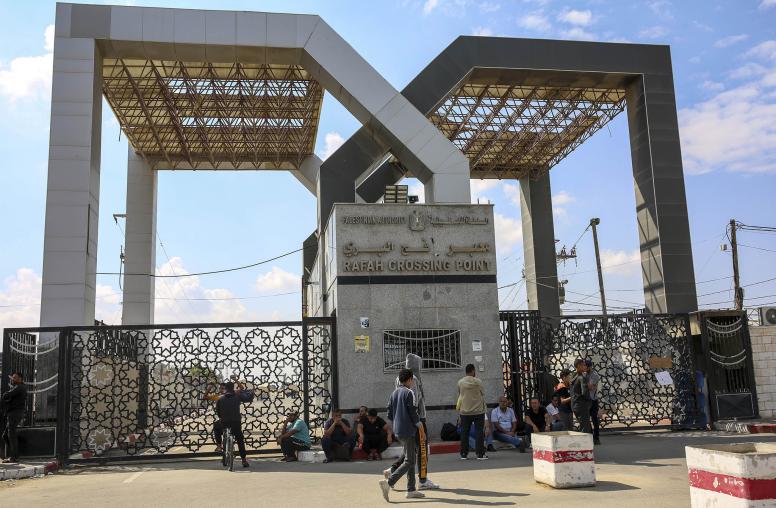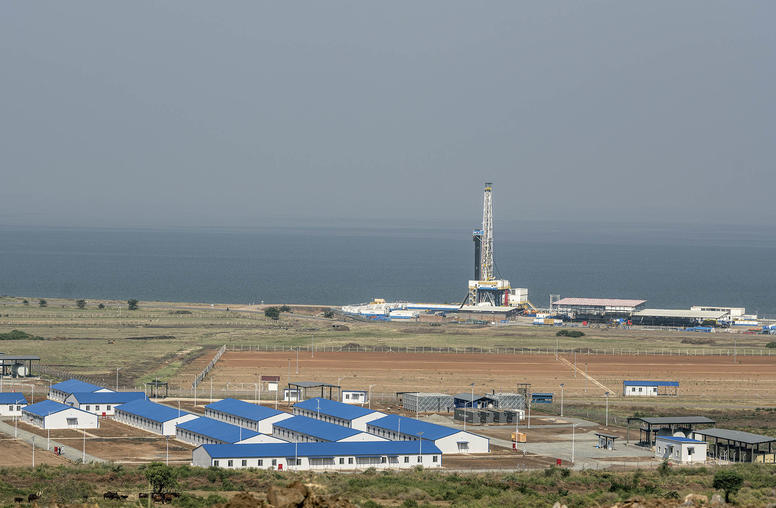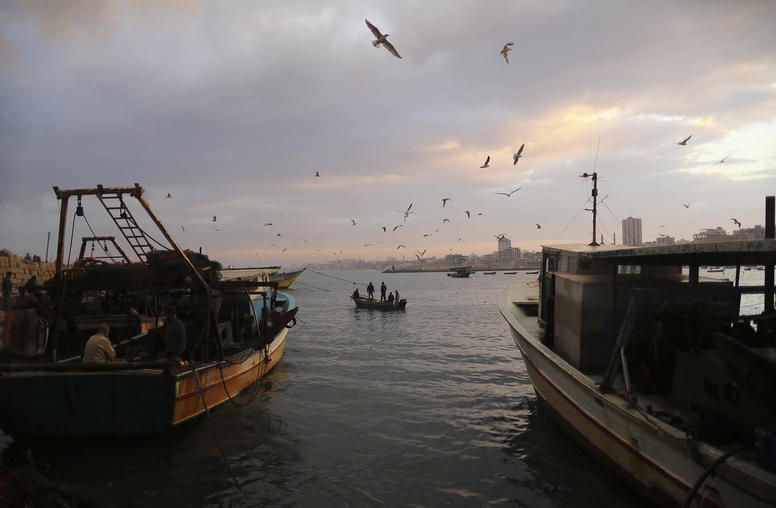Reflections on the Hard Lessons of Arab-Israeli Peacemaking
Ahead of President Obama’s meeting with Israeli Prime Minister Benjamin Netanyahu in early March, Ambassador Sam Lewis reflects on the challenges to building peace in the Middle East.
February 27, 2012
This past year has been offering fresh proof that the world we live in is ever dynamic. Amid fundamental changes in the Middle East and North Africa, a decade of war and a weak U.S. economy, the need to think about the U.S. role in the world is growing. This article is part of a series offering the thoughts of USIP leaders, board members, senior staff and experts on the effects of these changes and the contributions the Institute can and does make during this time of tremendous challenge and opportunity.
Samuel Lewis, a former president and CEO of the U.S. Institute of Peace (USIP), served as a career U.S. diplomat for 33 years. He held such positions as ambassador to Israel for eight years under Presidents Jimmy Carter and Ronald Reagan, during which he was a direct participant in the Israel-Egypt peace negotiations at Camp David and the subsequent Treaty of Peace. He also served as assistant secretary of state for international organization affairs, deputy director for policy planning at State under Secretary of State Henry Kissinger, senior National Security Council staff member for Latin America under President Lyndon Johnson and senior assistant to Undersecretary of State Chester Bowles. Lewis’s overseas assignments included service as acting U.S. ambassador in Kabul, Afghanistan, during the upheaval surrounding the 1973 coup d’etat that ousted King Zahir Shah, as well as posts with both State and the U.S. Agency for International Development in Brazil and Italy. Beginning in 1985, Lewis served for five years as president/CEO of the newly created USIP. In 1993 he joined the Clinton administration as director of policy planning for Secretary of State Warren Christopher and played an active role in the U.S. diplomatic team that helped mediate the successful launch of the Oslo Peace Accords between Israel and the Palestinians in 1993 and 1994.
Since retiring from government service, Lewis has taught at Georgetown University and the Johns Hopkins School of Advanced International Studies, held an appointment as visiting professor on three occasions at Hamilton College and served as a board member or senior advisor for a range of nonprofit organizations and think tanks concerned with the pursuit of peace between Israelis and Arabs and with broader issues of U.S. foreign policy.
You have been immersed in Arab-Israeli peacemaking efforts for several decades--as a senior U.S. official, a negotiator, a mediator, and as an analyst and teacher. You have also served as a facilitator of Track II mediation attempts to lay the groundwork for formal negotiations. What lessons can you draw from your experience with many of the key players in this particularly complex and stubborn dispute?
It’s hard to believe, but on reflection I realize that I have been wrestling with aspects of the Arab-Israeli conflict for 38 years, since joining Secretary Kissinger’s Policy Planning Staff in 1974. I had just returned from Afghanistan and under Kissinger I was able to play a minor role in the high points of Kissinger’s famous “shuttle diplomacy” after the Six-Day War of 1973. Through this long odyssey from war to truce to negotiations to more war and more negotiations to cold peace to Madrid to Oslo to Camp David and back again, many scholars, former diplomats and weary diplomatic spear-carriers have tried to draw lessons from this tangled history that could, if followed, produce a real and comprehensive peace. Some of their conclusions have influenced the labors of statesmen, but not many. Ultimately, the lessons that are most powerful lie in the realm of politics, leadership skills and timing--none of which are subject to much influence from the experts.
USIP, in fact, has sponsored two such exercises that produced publications with well-researched and wise lexicons, plus an extraordinarily perceptive volume edited by Tamara Wittes in 2005, How Israelis and Palestinians Negotiate. That book explores both the cultural chasm between Israelis and Palestinians and within the ranks of the Israelis and the Palestinians that contribute mightily to the history of missed opportunities. I convened the first USIP exercise in 1991 when I was the Institute’s president and subsequently wrote most of the product: a short USIP monograph in November 1991 titled Making Peace Among Arabs and Israelis, Lessons from Fifty Years of Negotiating Experience. A lot of water has gone down the Nile since that year (the Madrid Conference, the Oslo Process, the second Camp David, Annapolis, etc.). But reviewing our monograph today, I would scarcely change a sentence. It’s well worth revisiting.
Still, it’s worthwhile to list a few of the more important lessons:
- Timing is everything, or nearly everything. No significant negotiating breakthrough can occur unless the status quo has become so painful to either or both parties that they can make the excruciating compromises on basic issues that are essential to agreements.
- Politically dominant, courageous leaders on both sides are vital. They must be strong enough politically to carry reluctant publics with them into the unknown land of real compromise.
- Truly secret back-channels between leaders are also vital. Before launching formal diplomacy in the glare of the public spotlight, they must have become convinced privately that there is a possible outcome that is negotiable and that can be sold to their people as worth taking a great risk in order to break an unbearable stalemate.
- If, and only if, these three conditions are present, then a skillful, well-informed third-party mediator is essential. Despite the obvious problem of perceived bias posed by the U.S.-Israel quasi-alliance, only the president of the United States and/or his trusted and empowered representative can bring enough influence to bear, in many forms, to help the parties overcome the chasm of mistrust that has destroyed many previous efforts. Other mediators can play helpful supporting roles, but none can substitute for the American president.
I might add that once serious negotiations are launched, it is crucial to avoid long breaks and to persevere, preferably in a venue removed from the constant media distortions and the second-guessing of politicians. If negotiations fail, those involved need to make a maximum effort to avoid blaming the other party in public or through the use of leaks, so as not to preclude reconvening in the near future when the looming price of failure hits home for both sides.
Are there any other themes you’ve come to embrace over this long history?
There are many detailed lessons for how to handle the mediator’s role that have been widely cited and are discussed in USIP’s 1991 publication. However, I would suggest one other bit of guidance that is usually observed in the breach: We don’t own the problem--or the solution. The United States has a very large national interest in avoiding war in the Middle East and in helping to produce at least a nonviolent modus vivendi between Israel and its Arab neighbors. But we cannot impose a solution on either side of this conflict--not on a determined, strong and proud Israel, nor on a weaker, defiant Palestine. Nor should we try. When it is clear that the way is totally blocked, an American president is well advised to take a diplomatic time-out and wait for the political landscape to evolve and show some hint of a way to move forward. Defeat for an American presidential initiative carries a broader cost that should not be paid on too many occasions.
Then how would you judge the chances presently for renewing the Israel-Palestinian negotiations and making progress with them?
Very poor. None of the basic conditions I see as necessary are met right now. Trust between the parties is effectively zero. Both leaderships are preoccupied with other priorities: Israeli Prime Minister Benjamin Netanyahu with Iran, domestic political turmoil and early preparations for new elections; Palestinian Prime Minister Mahmoud Abbas with efforts to unify Gaza and the West Bank, achieve a formal reconciliation with Hamas and broaden Palestine’s international acceptance as a sovereign state, de facto and even de jure.
Meanwhile, the whole region is boiling. Syria is in or at least near a civil war. Iran and Israel are locked in a secret war that could be a prelude to a real one. Egypt is beginning to lay the groundwork for weakening if not renouncing the peace treaty. And the Israeli public is preoccupied with domestic crises, eying nervously the many uncertainties in its post-Arab Spring neighborhood and showing unjustified worry over the constancy of its American ally in the face of a perceived and growing existential threat from Iran.
No time could be less promising for renewing real negotiations. Merely going through the motions would only add to the disillusionment among both Palestinians and Israelis on the effectiveness of American mediation and diplomacy in general. There were moments in the late spring and early summer of 2011, as the Palestinians were pressing their case for independence at the United Nations, when putting forward a comprehensive presidential initiative and seeking its endorsement at the U.N. Security Council would have made good sense, but that moment is long gone.
So, if the landscape for Arab-Israeli peace is bleak for now, is there a useful role for second-track diplomacy or other kinds of civil society engagement by NGOs or USIP?
Yes, I think so. Of course, Israelis and Palestinians have had extensive Track II contact in scores of small meetings sponsored by European and American NGOs since at least the mid-1970s, and they continue under all sorts of academic and NGO auspices. Some have played important backstage roles in sensitizing the two sides to each other’s priorities and needs. They contributed significantly to the pre-Camp David I treaty negotiations and to the preliminary outlines of the 1993 Oslo Accord. Over time, the negotiators and many other officials on both sides have gotten to know each other quite well, something I often observed firsthand when I was involved in the pre- and post-Oslo processes in Washington. I have seen that friendships can help to break the ice when official negotiations are launched, but the familiarity with one’s opposite number from Track II efforts does not break the deadlocks in policy. Political decisions at the top are what counts. That’s why we so often return to the dilemmas and shortfalls of leadership.
Still, the more the contact at all levels, the better. That’s especially true in bleak times like now when official channels are blocked and public belief in an eventual peace is rapidly eroding on all sides. Track II, in its various forms, is well worth the investment over the long run if peace in the Holy Land is ever be achieved.
Explore Further
- Global Change, Peacebuilding and USIP
USIP leaders explain the effect that events around the world and here at home will have on the U.S., and the contributions the Institute can and does make during atime of tremendous challenge - and opportunity.



